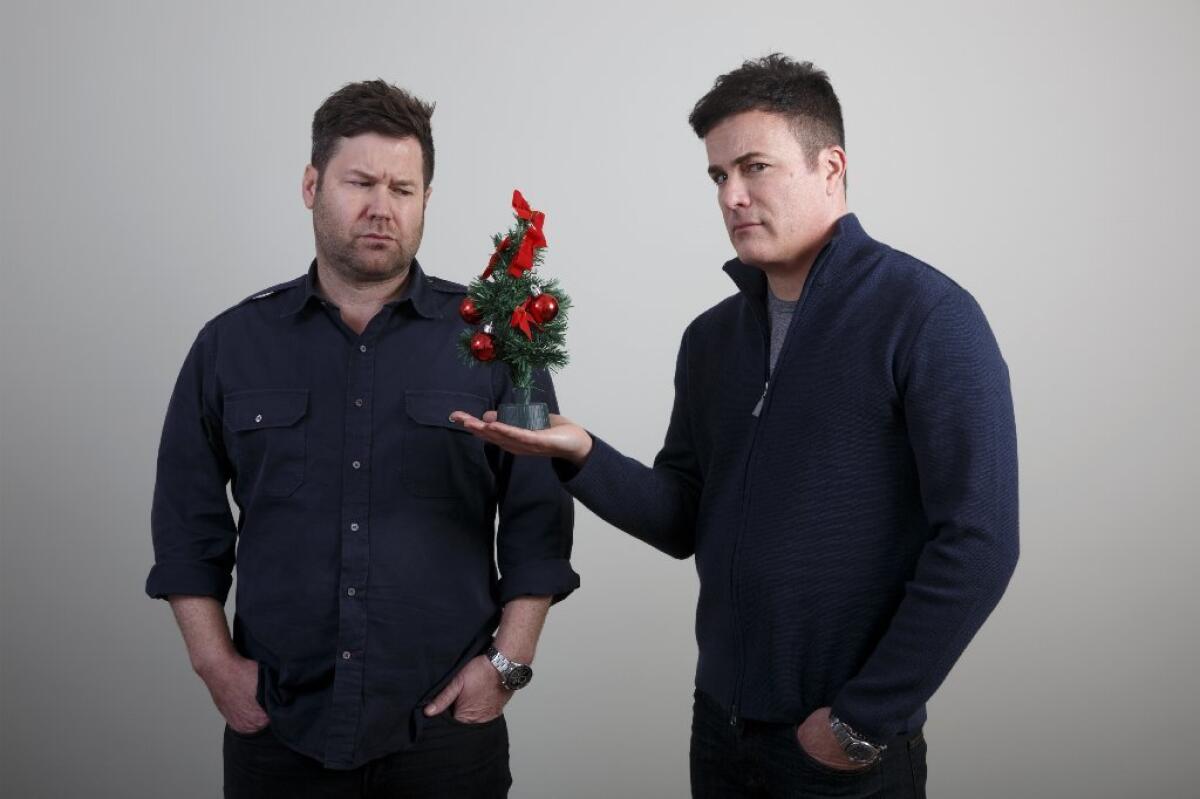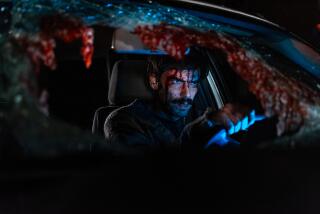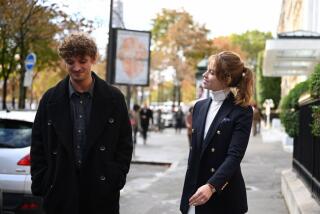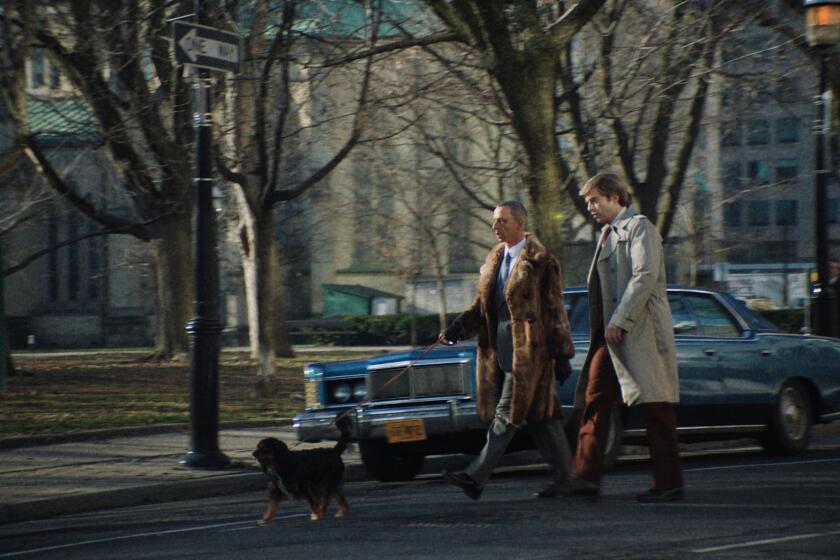The ‘Office Christmas Party’ directors reveal how to throw a black-out, call-the-cops, alert-the-ER shindig
In the raucous R-rated comedy “Office Christmas Party” – opening Friday with an ensemble cast including Jennifer Aniston, Jason Bateman, T.J. Miller, Courtney B. Vance, Olivia Munn and Kate McKinnon – the employees of a struggling branch of a tech company throw a massive, booze-fueled holiday party in a desperate attempt to impress a prospective client and save their jobs. Here, the film’s co-directors, whose previous comedies include “Blades of Glory” and “The Switch,” explain the process of creating perhaps the wildest, most debauched Christmas party ever to grace the big screen.
We were looking for a universal idea, something that felt like a common experience that we could sort of bring our own bent to. We were in a meeting with our manager around the holidays, batting around ideas, and he was talking about the idea of an office Christmas party because we’d all just been to them. We all jumped in and suddenly it was sort of like 1 plus 1 equals 3.
That night is so rife with danger and high stakes and tension, the opportunity to do an ensemble comedy around it was exciting to us. It’s such a charged night for so many people. It’s the one night of the year where the caste system sort of breaks down and people live honestly with each other, for good and for bad, which is why it has this destructive potential. You’re always one drink away from ruining your professional life.
When we were younger, office Christmas parties were more celebrated. It used to be OK to let your hair down and maybe even humiliate yourself and then still show up to work the next day. But in the litigious world we live in, with HR and social media, you’re not allowed to let chaos and craziness into the workplace anymore. So now an office Christmas party can be an act of rebellion. It almost becomes anthemic.

Jason Bateman, Olivia Munn, Jennifer Aniston, Jamie Chung, Kate McKinnon and Courtney B. Vance star in “Office Christmas Party.”
From the beginning, we said, “If you shoot a movie at a party, it had better be a party you want to hang out at.” In a weird way, the party – that euphoric, out-of-control environment – is the sort of star of the movie, so one of our biggest challenges was creating that energy every day. We watched early John Landis and Harold Ramis movies, kind of going back to that sort of tone and sense of humor that we had always liked from the late ’70s and early ’80s.
Having thrown a lot of wrap parties together, we actually threw a party like we would throw a party. We’ve been to a lot of bad versions of an office work party, where you’re stuck at a bar with an executive producer who you really aren’t interested in talking to. We wanted to make sure that the lighting was good, that the music was loud, that everybody got served – or over-served – and there was a lot to look at.
We were literally going to work in a party for two months. We had 300-plus extras who were with us for the whole shoot, and we built this massive set on two side-by-side soundstages, essentially duplicating two floors of the old IBM building in Chicago. It was totally immersive. When you walked on the set, even though it was spring in Atlanta, it felt like a non-stop Christmas party in downtown Chicago.
Getting yourself into that party vibe day after day after day – your reality starts to change. It was almost like a Las Vegas casino with no clocks. It had its own energy.

It’s hard when you’re throwing a party to get the momentum right. You don’t want to peak too soon but you also don’t want to take too long to get to it. So early on we charted this idea of the party having stages: There’s the part where not enough people have shown up and it’s not good. There’s the point at which it starts to tip and people start to invite people that probably shouldn’t have been invited. And then it has to go someplace outrageous.
We thought, “What haven’t we seen? What are images that we can put onscreen that can make people go, ‘I’d definitely want to go to that party.’” And that became the third-act section we call “Mayhem,” when the company really starts to lose its way, people realize they’re maybe not going to have a job tomorrow, and they start to trash the place. The vending machine gets thrown out the window. They’re jousting with Christmas trees.
The scene where Courtney B. Vance’s character, Walter, swings from the Christmas lights really represented the high-water mark of the chaos of the party, and we knew that was a must-land stunt. We tested it for weeks before we shot it, but still, the extras were totally freaked out. They thought the guy had really injured himself.
The shoot was a huge amount of fun. The extras were amazing in terms of re-entering the same set every day and really bringing that party to life. For the sequences where there’s music and dancing, we did it all live. We were all having such a good time that it didn’t feel that hard to suddenly turn on a celebration.
What made it the most fun was the actors. T.J. Miller likes to have a good time, and it got chaotic whenever he showed up. We’ve never met anyone quite like him. We went into a bar once with him in Atlanta after shooting and it was like being with Bill Clinton. Within 5 or 10 minutes, he had 100 people focused on him. He just has this magnetic thing where you just want to have fun around him.
Were people really partying on the set? Sadly, no. At 8 in the morning, I don’t think anyone wants to drink or smoke anything – they just want to get through the scene they’re shooting and figure out what’s going to be for lunch.
But by the time we got to the wrap party, I think people were sort of pent up and ready to actually have real drinks in their cups. It got a little bit big and out of control.
Ultimately, we wanted to get to a holiday movie through an R-rated comedy. We tried to combine the R-ratedness with a lot of heart and humanity – it’s an R-rated movie but it’s got its heart in the right place. There’s that feeling of Christmas that you sort of can’t avoid even while you’re Xeroxing your butt in front of your co-workers.
Office Christmas parties have become sort of an endangered species. A draw for us was the idea of the movie being sort of a rallying cry that maybe we’ve gone too far, maybe we need to bring this tradition back a little bit.
After “Animal House,” people started rushing fraternity houses again after them not being very popular in the early ’70s. Our hope is to be responsible for a lot of people getting fired at their office Christmas parties next year.
– as told to Josh Rottenberg
Twitter: @joshrottenberg
More to Read
Only good movies
Get the Indie Focus newsletter, Mark Olsen's weekly guide to the world of cinema.
You may occasionally receive promotional content from the Los Angeles Times.










